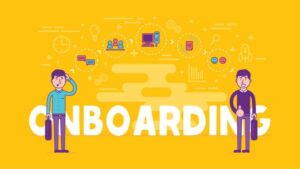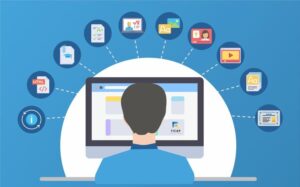The Subtleties of Digital Orientation
Orientation is one of the vital processes of every company. According to research by Brandon Hall Group, companies with a well-designed orientation process can increase employee retention by 82%.
Orientation is one of the vital processes of every company. According to research by Brandon Hall Group, companies with a well-designed orientation process can increase employee retention by 82%. In addition, the Human Resources Management Association reports that employees are 58% more likely to stay with the company for more than three years if they undergo a good orientation process.
Additionally, Brandon Hall Group states that strong orientation programs can increase productivity by more than 70%. Although the Human Resources Management Association states this value as 50%, this is still a very significant increase. Statistics show that two employees can work as effectively as three after a good orientation experience.
Challenges of Orientation
So what does correct orientation mean? First, starting a new job is stressful for people. Therefore, the company must make sure that new employees feel comfortable and do not become overwhelmed with information from day one.
This requires good trainers. The success of the orientation process almost entirely depends on the educators. It is important to ensure that employees remember important information.
Raising employee expectations is another challenge. If new employees feel that they do not know the company properly, there is a possibility that they will not stay with the company for long. As the job market becomes more competitive and expectations increase, many people are looking forward to the option to work from home. However, remote orientation is cumbersome.
Digital Orientation
In answer to many of the problems we have mentioned above, we can give the educational approach changing from traditional methods to digital. Digital orientation involves using technology and digital tools to complete or facilitate the process. These tools include mobile applications, internet-based educational resources, and new technologies such as virtual and augmented reality.
What are the main benefits of digital orientation?
- You do not need to appoint an experienced employee as an instructor first. This gives the employee more time to deal with other important tasks.
- Digital orientation offers comfort and flexibility. New employees can learn at their own pace and spend more time on certain things if needed.
- You get better retention because digital learning is more eye-catching. If you include technologies such as VR and AR in education, the rate of retention increases even more.
- Another plus is that the company has a good employer image.
- Digital orientation makes it easy to complete the process remotely.
- Digital platforms are easy to manage and update. You can always add new resources and functionality.
- You can easily track the progress of employees.
Creative Orientation Ideas with VR
Orientation with virtual reality is based on training the employee with VR. There is a lot of research and statistics showing that this form of education is significantly more effective than traditional methods. For example, experts state that the retention rate of information is around 75% when VR training is given. That’s three times higher than normal audiovisual sources. So how can virtual reality improve digital orientation? Generally speaking, it allows employees to visit places and see people without being physically present in a particular location. With VR, you can also create virtual spaces that would be impossible or expensive to create in real life.
For example, you can provide tours of the company’s headquarters to remote workers using VR. Or you can show managers and office staff how the production process works. This way, you can give the production team a better understanding of how the company works without interrupting their work. Finally, you can provide employees with tours of the different departments of the company.
AR in Digital Orientation
Augmented reality has the same advantages as VR. Its biggest advantage over VR is that it doesn’t need special hardware. To use AR, all the employee needs is a modern smartphone.
You can make the use of AR more creative and practical by placing markers such as QR codes around the office in digital orientation. Employees can activate certain activities in the app by pointing their camera at these stickers.
For example, you can place QR codes near office doors and make a fun description of who is using that space and what job they are doing. Similarly, these codes can be placed near specialist equipment for more technical work environments and can be made to indicate safety rules.
You can also create virtual robot AI application that walks around with employees and shows them the office. Augmented reality also creates opportunities for gamification. For example, you can use QR codes for treasure hunting. Employees can earn points by finding items and completing AR experiences or tasks and learning new things at the same time.
As discussed in this article, establishing a creative orientation program is critical for any company. Orientation affects team satisfaction, improves employee retention and productivity. Thanks to good orientation, your staff follow the procedures correctly and know how to use the equipment properly.



